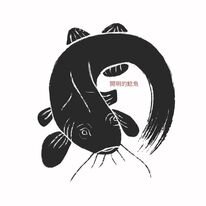Anger Management is Fear Management
I see anger as essentially a form of fear. And I see anger management as essentially a form of fear management. There are true tigers and there are paper tigers, true threats and symbolic/conditioned threats. Nobody needs to be taught how to fear a real tiger: that's hard-wired and taken care of. Yet many of us -- particularly those struggling with anger -- do require help with learning how not to fear paper tigers (symbolic/conditioned threats). And all of us need to learn how not to fear fear itself, in which case, anger management goes beyond fear management and becomes tantamount to mind management.
What follows is a Sutra on Anger and Fear, a collection of my thoughts on mind, anger, fear and equanimity. Sutra, in Sanskrit, means "aphoristic teaching." I don't speak this ancient language, but I like to play with it a bit, because a good bit of my clinical thinking has been influenced by Vedic, Buddhist, and Jainist ideas that were originally written in Sanskrit. Following are a few of my positions on anger. These ideas constitute my philosophy of anger.
Life is scary, so we are naturally afraid.
Fear is normal.
Evolution has prepared us to be afraid, to be somewhat paranoid and on guard.
Defensiveness is normal, even necessary (up to a point).
But paranoia and defensiveness divide "what is" into "self " and "other."
This self-other division gives rise first to fear and then to anger.
This self-other dualism -- for all intents and purposes -- is inevitable and thus normal.
As a species, we are safer than ever -- the saber-toothed tigers have all died out -- thus, mostly what we fear are symbolic threats, "paper tigers."
Fear of symbolic threats is normal.
Anger is the flipside of the fear coin: the "fight" part of the flight-or-fight self-defense system.
Anger is a form of self-defense. It is fear-based.
Anger is a response to fear -- a response to a perceived or real threat.
Anger is normal.
Anger feels like fearlessness, but it isn't.
The fearlessness of anger is misleading, because anger is fear based.
We are not just afraid of what's outside. We are also afraid of what's inside.
We are afraid of our own feelings.
We are afraid of being afraid.
Anger is a release of all these fears.
Anger is a consolidation of a feeling of fear into action, the beginning of an escape from "what is."
When faced with real threats, anger is a legitimate self-defense solution.
Anger, just like fear, is an impulse to run -- just in the opposite direction.
Even if you are running toward the threat (to confront it), running is running.
When faced with symbolic threats (threats to our ego, to how we are seen or thought about), we also have the impulse to run away from others' thoughts about us or from our thoughts about others' thoughts about us. We feel threatened by disregard, disrespect and disapproval, so our fearful egos act out by getting angry at others.
The solution to this kind of anger is to stay with the fear (of the symbolic, because the symbolic is safe).
Only by staying with the fear do we learn not to be afraid of being afraid.
Fear itself--the feeling of fear (be it of the real or of the symbolic) -- is safe.
Fear of fear is normal, but so is non-fear of fear.
When you are not afraid of being afraid, you don't need anger.
Anger isn't a tool for dealing with ego threats. It's a tool for dealing with bodily threats.
Fear passes, anger passes, fear of fear passes, and anger about anger passes.
There is never been a feeling (or mind-states) that didn't eventually go away.
Ultimately, because all feelings pass, there is absolutely nothing required of us but to witness "whatever is" transform into "whatever was."
Staying with "what is" is the true fearlessness.
